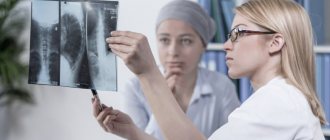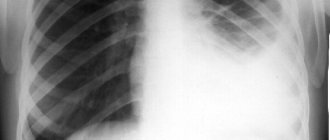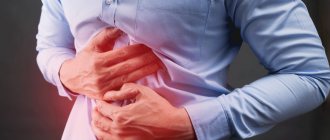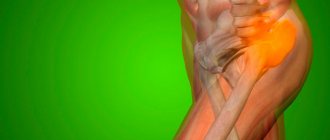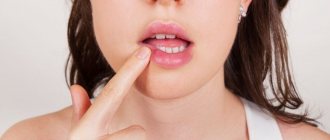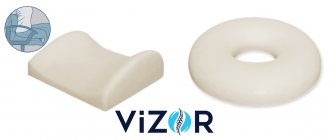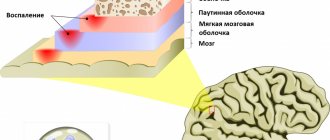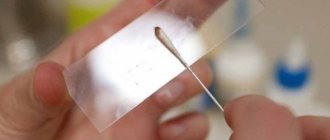JSC "Medicine" (clinic of academician Roitberg) operates a Pain Treatment Center. More details about the Pain Treatment Center
Oncologist
Zhukova
Elena Nikolaevna
11 years of experience
Oncologist, member of the Russian Society of Mammologists, member of RUSSCO (Professional Society of Oncologists and Chemotherapists), member of the European Cancer Society ESMO
Make an appointment
When a woman has chest pain, it is almost impossible to miss this phenomenon. Sharp, sharp or nagging pain may resemble a burning sensation or many tiny pricks. There can be a lot of reasons that provoked the appearance of such a symptom. Many of them are not at all as harmless as they might seem, so you should not ignore increased breast tenderness, but seek qualified medical help.
Causes of pain in the mammary gland
Large breast size
Women with breasts of size 4 or more experience heaviness and soreness of the mammary glands at the end of the day.
Unpleasant sensations occur when there is insufficient support for the breasts, causing them to sag and creating additional stress on the spine. The pain is dull, non-intense, significantly reduced in a horizontal position. The symptom is accompanied by a painful aching sensation in the scapular region. The appearance of pain in the mammary glands is provoked by an incorrectly selected bra, which either does not hold the breasts at all or compresses them too much. Patients complain of bursting pain of moderate intensity in the mammary glands, which is aggravated by accidental careless touch. If such signs are observed daily or the pain increases sharply, you should consult a specialist.
Sports training
Women who exercise intensively and exercise their pectoral muscles often complain of pain in the projection of the mammary glands. Muscle pain is caused by the accumulation of lactic acid in tissues and swelling of myofibrils after overexertion. Symptoms disappear on their own after rest. Prolonged sharp pain after exercise can be caused by pathological causes, so in this case you need to consult a specialist.
Menstrual cycle
Hormonal reasons contribute to the development of mastalgia before menstruation. A sharp decrease in the amount of estrogen provokes swelling and swelling of the mammary gland tissue, and dull pain of moderate intensity occurs. Patients note increased breast sensitivity and increased pain during touching and wearing a bra. In most cases, the symptom disappears 2-3 days after the start of menstrual bleeding.
Some women experience cyclic pain in the middle of the monthly cycle, which corresponds to ovulation. During this period, the mammary glands are prepared for possible fertilization, and the volume of secretory cells increases. Such changes are manifested by discomfort and a feeling of fullness, an increase in the size of the mammary glands. Increased or paroxysmal nature of cyclical pain indicates pathological causes requiring medical attention.
Pregnancy and lactation
Beginning in the first trimester of pregnancy, both mammary glands undergo structural changes necessary for milk production. This is accompanied by constant heaviness and pain, the chest seems to “fill up” and swell. The pain in the mammary glands is moderate and does not cause severe discomfort. As labor approaches, the nipple may release a few drops of yellowish fluid.
Normally, there is no pain during breastfeeding. Discomfort is associated with a violation of the interval between feedings, when a large amount of milk accumulates in the ducts and alveolar tissue, causing bloating and heaviness. Sharp local pain in the areolar area is caused by cracks in the nipple and erosions of the delicate skin, which form when feeding techniques are violated and when the child’s first teeth erupt.
Mastopathy
Fibrocystic changes in glandular tissue are the most common pathological causes of pain. With nodular mastopathy, the pain is localized in one mammary gland. The symptom is observed in the second phase of the menstrual cycle, when unilateral swelling increases and the breasts increase in size. The pain is aching, stabbing, and often radiates to the shoulder or shoulder blade.
Diffuse mastopathy is characterized by painful bursting or stabbing pains that spread throughout the chest. Before menstruation, the breasts swell, their tissue becomes dense, and the pain intensifies at the slightest touch. With the onset of bleeding, the pain gradually subsides. Regular severe pain disrupts sleep and appetite, and some patients develop a fear of cancer.
Mastitis
Infectious causes cause severe pain in the mammary gland in women, caused by a purulent process and the accumulation of pathological inflammatory mediators that irritate the nerve endings. The pain associated with purulent mastitis is sharp, tugging, and unbearable. They are aggravated in an upright position and subside slightly with an elevated position of the mammary gland. A foul-smelling yellow-green liquid is released from the nipples.
Due to severe pain, patients stop sleeping, their condition worsens due to high fever and intoxication. With non-purulent mastitis, the pain is less pronounced, constant dull pain is felt in the chest against the background of an increase in body temperature to 38.5 ° C. Discomfort intensifies when squeezing the areola area or touching the affected part of the mammary gland. Such symptoms are an indication for emergency medical care.
In advanced situations, purulent inflammation turns into a breast abscess, as evidenced by increased and more precise localization of pain in one area. The skin over this area becomes red or purple in color, and touching causes severe pain. There is usually no discharge from the nipple. Against the background of pain, high fever occurs, sometimes of the hectic type.
Nipple diseases
With nipple eczema, itching and discomfort first appear in the areolar area (the darker skin surrounding the nipple), and after a few days polymorphic rashes form, combined with sharp pain. Then the blisters turn into erosions and small ulcers, and an increase in pain is noted. As you recover, the pain gradually subsides and is replaced by intense itching, mainly at night.
Pain in the mammary gland on the affected side is characteristic of inflammation of the nipple of bacterial and viral causes. Symptoms are localized in the areola area, sometimes the pathological process spreads to the surrounding breast tissue. When pressing on the nipple, a purulent or bloody secretion is released. The disease requires examination by a specialist, since without treatment there is a risk of massive purulent inflammation or sepsis.
Injuries
When blows to the chest area, a sharp, severe pain initially occurs, which lasts from hours to several days, depending on the degree of injury to the mammary gland. In uncomplicated cases, a bruise forms on the skin, but the glandular parenchyma remains intact. With strong blows, the pain lasts a week or more, and bloody fluid is released from the nipple.
Pain in the mammary glands occurs not only with direct mechanical influences, but also when wearing a tight bra. Prolonged traumatic compression of the chest leads to microcirculation disorders, which is manifested by bursting painful sensations and heaviness. Symptoms intensify in the evening, when there is severe swelling and increased sensitivity of the skin of the gland.
Benign formations
In the initial stages of breast adenoma and cyst, pain is not always a concern. Discomfort and heaviness that are observed before menstruation are characteristic. As the formation increases in size and hormonal imbalances, a constant pain syndrome develops, the breast becomes denser and swells. Sometimes the patient independently finds a dense node in the mammary gland, upon palpation of which the pain becomes stronger.
Unpleasant sensations remain the only symptom of the disease for a long time, then the pain is accompanied by periodic discharge of a transparent or whitish secretion from the nipple. With intraductal papilloma, pain is accompanied by the flow of a thick greenish secretion that occurs when the contents stagnate in the milky tubules. With a lipoma, slight pain is felt in the area of the mass formation.
Malignant tumors
In advanced stages of breast cancer, tumor causes cause severe excruciating pain, leading to neurasthenia and insomnia. But at the beginning, nonspecific symptoms predominate in the form of discomfort and pain, heaviness in the chest in the evening. These manifestations are similar for many diseases, so it is important to maintain oncological vigilance.
During an independent examination of the mammary gland, the patient discovers a formation of irregular shape and dense consistency, which does not move in relation to the skin, and is very painful. In this area, typical changes in the skin are formed: “lemon peel”, retraction of the skin area. Sometimes the pain spreads to the armpits, which indicates the involvement of the lymph nodes in the process.
Thoracic osteochondrosis
Degenerative changes in the connective tissue of vertebral cartilage lead to damage to nerve fibers. The pain that occurs with thoracic osteochondrosis is localized not only in the back, but also along the anterior surface of the chest in the area of the mammary gland. The pain is strong, paroxysmal, usually aggravated by sudden turns and bending of the body.
This disease is sometimes a provoking factor in the development of intercostal neuralgia, which is characterized by stabbing or burning pain in the ribs and mammary glands. The pain is localized along the anterolateral side of the chest and is aggravated by careless touching and squeezing by tight clothing. The pain often radiates to the area of the shoulder blades and collarbones.
Complications of pharmacotherapy
Mastalgia is mainly associated with the use of female sex hormones. Symptoms occur at the stage of selecting oral contraceptives, when prescribing estrogen derivatives during menopause. Pain in the mammary glands is not severe, its character resembles soreness during the premenstrual period. The symptom is also provoked by other medicinal causes: taking antipsychotics, antidepressants, tranquilizers.
Rare causes
- Iatrogenic conditions
: the first days after an abortion, operations in the anterior chest wall. - Placement of breast implants
. - Intercostal myalgia
. - Endocrine diseases
: pathology of the pituitary gland, thyroid gland, adrenal glands. - Breast tuberculosis
.
Content
- Causes of breast pain before and after menstruation
- Why do my breasts hurt before my period?
- Hormonal causes of chest pain during childbearing years
- Additional factors influencing pain sensations
- No menstruation, but my chest hurts
- Why do my breasts hurt after my period?
- Ways to eliminate chest pain during and after menstruation
Chest pain is a sensation familiar to almost all women. Both young girls and older women are often concerned about the question of why their breasts hurt after menstruation or before it.
Diagnostics
A mammologist is involved in determining the cause of pain in the mammary glands; if necessary, the doctor involves other specialists for consultation. An integrated laboratory and instrumental approach allows for a detailed examination of not only the breasts, but also the endocrine system and the musculoskeletal system. The most informative studies are:
- Ultrasonography
. Breast ultrasound is indicated for young women, since the glandular parenchyma of the breast is denser and better visualized using sonography. Limited round formations or diffuse changes are detected, which are associated with the appearance of pain in the mammary gland. Identification of a cavity with thick walls and hypoechoic contents indicates the presence of an abscess. - Mammography
. An X-ray is used as a screening method in women over 40 years of age, and in young patients it is used to clarify the location and size of the tumor. Mammography allows you to study the contours and internal structure of the tumor; in inflammatory processes, widespread nonspecific structural changes predominate. - Radiography
. An X-ray of the spine is performed to assess the condition of the vertebrae and identify pathological displacements or deformities. If osteochondrosis is suspected, the method is supplemented with tomography (CT or MRI), which clearly visualizes the intercostal discs and cartilage tissue. Plain radiography of the chest cavity is required to search for tumor metastases. - Biopsy
. Severe pain in the mammary gland and detection of a neoplasm by instrumental methods serves as the basis for a fine-needle biopsy under ultrasound guidance. For greater information, a thick-needle trephine biopsy is performed. The resulting material is sent for histological and cytochemical examination. - Lab tests
. General and biochemical blood tests can reveal changes in the number of leukocytes and an increase in ESR. A specific diagnostic method is the determination of tumor markers and autoantibodies in the blood. To verify the bacterial cause of the disease, the discharge from the gland is cultured on selective nutrient media. - Additional methods
. If pain in the mammary gland can be caused by intercostal neuralgia, electroneurography is recommended. The study helps to study the excitability of nerve fibers and the speed of impulse transmission. Be sure to study the female hormonal profile on different days of the menstrual cycle.
Examination of the breast by a mammologist
No menstruation, but my chest hurts
Sometimes women notice that there are no periods, but their breasts hurt. Let's try to figure out why this happens:
- First of all, remember what you did recently: were you training at the gym, lifting some weights? You probably just strained your muscles and the pain will disappear in a day or two.
- Pregnancy. Moreover, we mean not only the presence of a normal pregnancy, but also an ectopic one.
- Mastopathy is the most common disease of the mammary glands, occurring in more than 70% of the fair sex on earth.
- Structural changes in the chest or various inflammatory processes that have arisen in the chest.
It should be noted that severe pain can also be caused by the most dangerous disease - breast cancer.
Treatment
Help before diagnosis
Minor pain in the mammary glands, caused by hormonal reasons and the approach of the menstrual cycle, is not dangerous. To reduce discomfort, it is recommended to choose a larger bra with good breast support, which will not compress the breast tissue and aggravate symptoms. In case of severe swelling, 3-4 days before menstruation, it is necessary to limit the consumption of spicy and salty foods.
To prevent pain in the mammary gland associated with the development of lactation mastitis, it is important to observe the rules of personal hygiene after each feeding and to prevent stagnation of milk. It is advisable to use special nursing underwear made from natural materials. Prolonged pain accompanied by general malaise indicates the presence of a pathological cause. You should definitely consult a doctor and find out why the symptom occurred.
Conservative therapy
Medical tactics depend on the etiological factor of pain in the mammary gland. Preferably, etiotropic and pathogenetic treatments are prescribed to eliminate the causes of pain and promote rapid recovery. Medicines are combined with physiotherapeutic interventions (electrophoresis, compresses), which are used only after excluding tumor pathology. Most often, pain treatment regimens include:
- Analgesics
. The drugs are indicated for severe pain in the mammary glands, which disrupts sleep, appetite, and causes asthenic symptoms. In typical cases, non-steroidal anti-inflammatory drugs are used, which effectively reduce the level of inflammatory mediators and reduce swelling. - Antibiotics
. For bacterial infections, broad-spectrum drugs are needed that act on typical infectious causes of mastitis. Medicines are selected taking into account the results of bacterial cultures and antibiotic sensitivity tests, course therapy lasts at least 7 days. - Hormones
. If sharp pain in the mammary glands is caused by hormonal causes in the premenstrual period, estrogen preparations are recommended. The funds are also needed in the treatment of benign breast formations and mastopathy. - Infusion solutions
. Tumor and inflammatory causes are accompanied by severe intoxication, which is eliminated by intravenous infusions of colloid and crystalloid solutions in combination with loop diuretics. - Cytostatics
. Combinations of 2-3 chemotherapy drugs are prescribed for malignant neoplasms of the nipple and gland. Medicines are taken in courses; for better effect they are supplemented with local radiation exposure. - General strengthening
. In case of chronic pain in the mammary glands, the body is depleted, so ascorbic acid and B vitamins are used. For severe asthenia, anabolic steroid drugs are indicated.
Surgery
Breast cancer is an absolute indication for surgery. In rare cases, at the initial stage of the process, sectoral breast resection is performed. In most situations, a radical mastectomy with removal of regional lymph nodes is necessary. Sometimes, with unstable hormonal levels and a high risk of malignancy, a benign tumor is removed.
To reduce pain in the mammary gland during purulent inflammation, opening and drainage of mastitis is indicated, which involves making a skin incision at the site of fluctuation and washing the cavity with an antiseptic solution, followed by installation of drainage. In the case of gangrenous mastitis, removal of the entire mammary gland is required, followed by plastic surgery. Large hematomas formed after chest injuries are opened to prevent suppuration.
Ways to eliminate chest pain during and after menstruation
When pain appears after menstruation, there is a possibility that it may be caused by a serious illness, and it is impossible to ignore it. To find out why your breasts hurt after your period, make an appointment with a specialist. If pain recurs regularly, start keeping a diary, noting the moments when they occur. At your appointment, the doctor will definitely ask you about the location and intensity of the pain, the presence of any discharge from the nipples, etc. Try to answer all questions asked in great detail.
After the survey, as a rule, palpation (manual examination) of the glands is carried out and the condition of the axillary nodes is analyzed. If the examination reveals any hardening in the breast, an experienced and qualified doctor will prescribe an ultrasound or mammography to diagnose them.
When a cyst or any tumors are detected, surgical operations are often resorted to, which can be supplemented with chemotherapy. You can find out more about this from your doctor.
For the treatment of pain not associated with various diseases, the following recommendations exist:
- forget about bad habits - stop smoking and alcohol;
- avoid stressful situations, as they only aggravate the situation;
- do not get too cold;
- take a warm (not hot!) bath;
- Eat well and properly (do not eat spicy, fatty or sour foods, eat more vegetables and fruits);
- choose the right underwear.
If these recommendations do not help you, take a pain reliever (ibuprofen, danazol, bromocriptine, naproxen), but remember that your doctor must prescribe it.
general characteristics
Discomfort and pain in the chest occur with various pathologies of the musculoskeletal system, internal organs and skin, so the pain is very variable.
The nature of the pain is dull, pressing, stabbing, squeezing. Some patients describe the sensation as an intense burning sensation in the sternum area. The duration of the pain syndrome ranges from several minutes to several weeks, while the pain remains constant or increases over time. Irradiation to the arm, collarbone, and scapula is often observed. Unpleasant symptoms intensify with sudden movements of the body, deep breaths, and physical activity. In case of damage to the nerve trunks, the chest hurts more during palpation or accidental touches, the pain subsides when lying motionless. Inflammatory processes of the pleura are characterized by a decrease in discomfort when lying on the affected side. Constant pain of moderate intensity and sudden severe pain attacks are an indication for seeking medical help.
